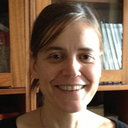Bifocal germinoma in a patient with 16p11.2 microdeletion syndrome.
Słowa kluczowe
Abstrakcyjny
Intracranial germinomas are rare tumors affecting mostly patients at young age. Therefore, molecular data on its etiopathogenesis are scarce. We present a clinical case of a male patient of 25 years with an intracranial germinoma and a 16p11.2 microdeletion. His initial complaints were related to obesity, loss of facial hair and polydipsia. He also had a history of social-interaction difficulties during childhood. His blood tests were consistent with hypogonadotropic hypogonadism and secondary adrenal insufficiency, and he had been previously diagnosed with hypothyroidism. He also presented with polyuria and polydipsia and the water deprivation test confirmed the diagnosis of diabetes insipidus. His sellar magnetic resonance imaging (MRI) showed two lesions: one located in the pineal gland and other in the suprasellar region, both with characteristics suggestive of germinoma. Chromosomal microarray analysis was performed due to the association of obesity with social disability, and the result identified a 604 kb 16p11.2 microdeletion. The surgical biopsy confirmed the histological diagnosis of a germinoma. Pharmacological treatment with testosterone, hydrocortisone and desmopressin was started, and the patient underwent radiotherapy (40 Gy divided in 25 fractions). Three months after radiotherapy, a significant decrease in suprasellar and pineal lesions without improvement in pituitary hormonal deficiencies was observed. The patient is currently under follow-up. To the best of our knowledge, we describe the first germinoma in a patient with a 16p11.2 deletion syndrome, raising the question about the impact of this genetic alteration on tumorigenesis and highlighting the need of molecular analysis of germ cell tumors as only little is known about their genetic background. Learning points: Central nervous system germ cell tumors (CNSGTs) are rare intracranial tumors that affect mainly young male patients. They are typically located in the pineal and suprasellar regions and patients frequently present with symptoms of hypopituitarism. The molecular pathology of CNSGTs is unknown, but it has been associated with gain of function of the KIT gene, isochromosome 12p amplification and a low DNA methylation. Germinoma is a radiosensitive tumor whose diagnosis depends on imaging, tumor marker detection, surgical biopsy and cerebrospinal fluid cytology. 16p11.2 microdeletion syndrome is phenotypically characterized by developmental delay, intellectual disability and autism spectrum disorders. Seminoma, cholesteatoma, desmoid tumor, leiomyoma and Wilms tumor have been described in a few patients with 16p11.2 deletion. Bifocal germinoma was identified in this patient with a 16p11.2 microdeletion syndrome, which represents a putative new association not previously reported in the literature.


